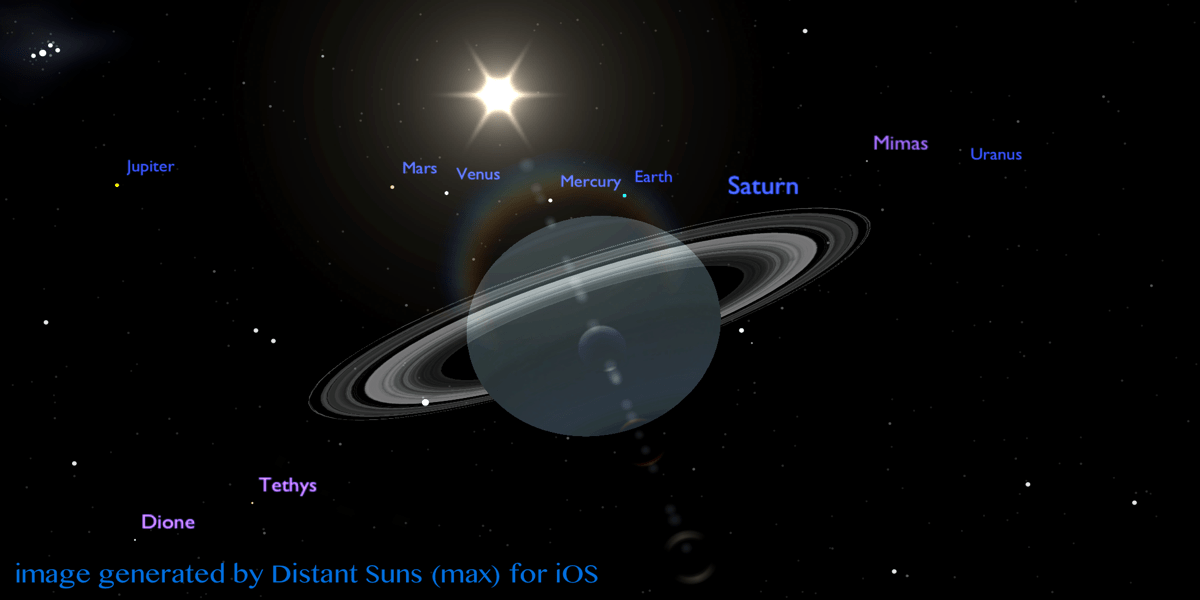You've hopefully heard about the chance to
have your picture taken this Friday
– along with the rest of humanity – by the Cassini spacecraft, currently about 1 billion km away as it orbits Saturn. But now another spacecraft has joined in on the fun.
Inspired in part by the Cassini team, scientists from the MESSENGER mission at Mercury realized their upcoming orbital parameters has Earth coincidentally in the crosshairs of its cameras as it takes images to search for natural satellites around Mercury on July 19 and 20. So we've got not one, but TWO spacecraft to smile at, pose for, and generally be on good behavior as they take pictures of planet Earth. Here's when you should be smiling and waving:
MESSENGER will be taking images at 11:49, 12:38, and 13:41 UTC (4:49 a.m., 5:38 a.m. and 6:41 a.m. PDT or 7:49 a.m., 8:38 a.m. and 9:41 a.m. EDT, or) on both days, July 19 and 20. Parts of Earth not illuminated in the Cassini images, including all of Europe, the Middle East and Central Asia, will appear illuminated in the MESSENGER images. MESSENGER's images also will take a few days to process prior to release, the team said.
The image taken from the Saturn system by NASA's Cassini spacecraft will occur between 21:27 and 21:47 UTC (2:27 and 2:42 PDT, 5:27 and 5:42 p.m. EDT) on Friday, July 19. Cassini will be nearly 900 million miles (nearly 1.5 billion kilometers) away from Earth. NASA is encouraging the public to look and wave in the direction of Saturn at the time of the portrait and share their pictures via the Internet.
[caption id="attachment_103574" align="aligncenter" width="580"]
The 'Wave at Saturn" event will be the first time Earthlings have had advance notice that their picture will be taken from interplanetary distances. Credit: NASA/JPL-Caltech[/caption]
If Saturn isn't in your field of view at the time, you can join in online to
take a look at Saturn with Gianluca Masi and the Virtual Telescope Project
from Italy.
Also, at the exact time the Cassini spacecraft is snapping pics of Earth, the
Slooh
Space Camera will be snapping images of Saturn - live and in true color - with live broadcast team. Their feed starts at 2:30 PM PDT / 5:30 PM EDT / 21:30 UTC with live views of Saturn from the Canary Islands.
We'll embed the feed here:
There are events associated with this
Wave at Saturn
event, and we'll repost the info from our
previous article:
For all our astrophotographer friends out there, in cooperation with Astronomers Without Borders, TDTES is sponsoring a
Saturn Mosaic project
, where you can submit an image you've taken of Saturn.
Urgency note
:
this has to be submitted by July 22, 2013.
Astronomers Without Borders is also sponsoring a special
Saturn Observing Program,
and they are encouraging people and organizations to either organize a special observing event for July 19 (
you can register it as an official event here
) or to attend an event near you.
You can find TDTES events here.
This can be a full-blown observing event with telescopes, or just an excuse to get together with friends to go out and look at Saturn in the night sky.
There are also two competitions -- one is to
submit photos that best represents Earth
(the image must be taken on July 19, 2013) and another is to
write an original song about this event.
The digital versions of the winning entries will be beamed to space at a later date.
Find more information at
The Day The Earth Smiled website
, and the
Astronomers Without Borders website.
NASA also has info about events for the #Wave at Saturn event, including charts on
where and when to look for Saturn in the night sky here.
NASA says these charts take into account the light travel time from Saturn.
 Universe Today
Universe Today
